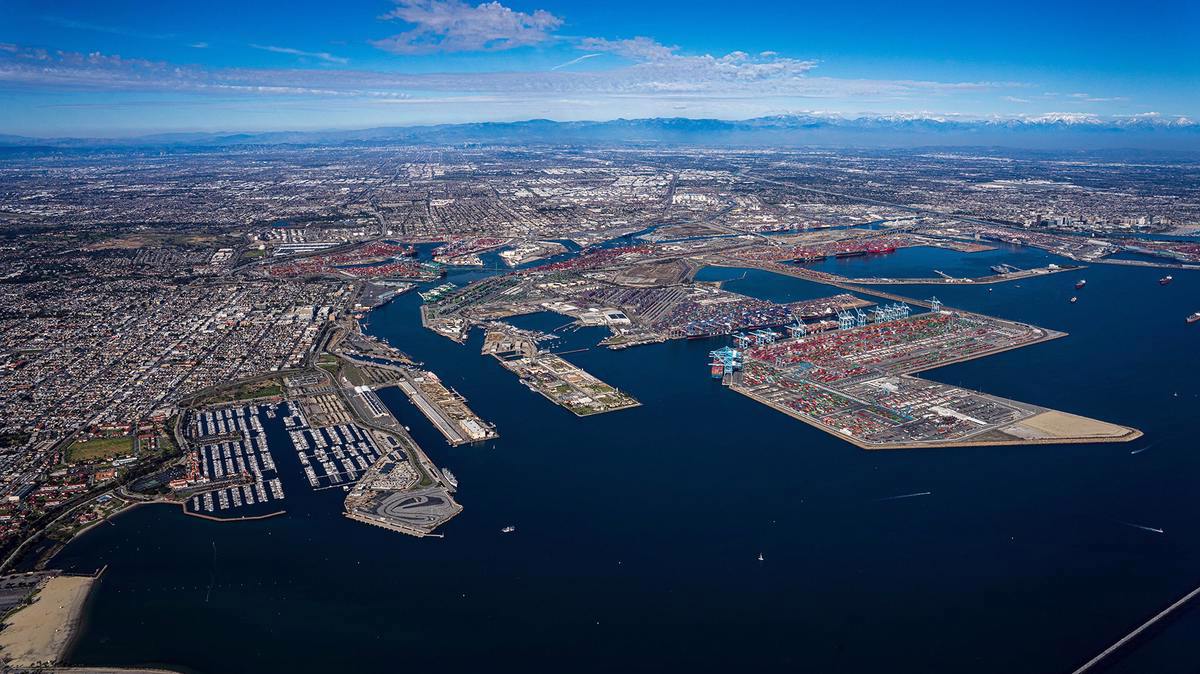Los Angeles bunker demand drops in February amid slowdown in container shipping
The US West Coast port of Los Angeles recorded the lowest container throughput in February since March 2020, when trans-Pacific trade was shut down by Covid-19 lockdowns.
 PHOTO: Aerial view of Port of Los Angeles. Getty Images
PHOTO: Aerial view of Port of Los Angeles. Getty Images
The port recorded a container throughput of 487,846 TEUs in February, down from 857,764 TEUs a year earlier, according to Los Angeles port data. The drop of 43% suggests that fewer container ships arrived in Los Angeles, and by extension that it saw lower bunker demand. Container ships are one of the biggest bunker fuel consuming vessel types.
The port's import throughput last month fell by 41% to 251,583 TEUs from February last year, which also marked the lowest level since March 2020.
The Port of Long Beach also reported a drop in container throughput last month. Its volume declined to 543,675 TEUs last month, from 796,560 TEUs in February last year.
Availability of all fuel grades is better than normal in the West Coast ports of Long Beach and Los Angeles amid weak demand. Suppliers are able to offer deliveries with lead times of around 3-4 days, which is shorter than usual 12-14 days.
A similar drop in throughput was observed in other US ports last month, mainly because a slowdown in global consumer demand reduced the demand for vessels to ship goods from Asia to the US and Europe.
Last month, import throughput in the East Coast port of New York fell by 11% from February last year to 280,652 TEUs.
Bad weather in recent weeks across most American ports also contributed to pull down throughput volumes. Meanwhile, rising inflation and concerns about slow global economic growth are expected to have a more lasting impact on container shipping.
By Debarati Bhattacharjee
Please get in touch with comments or additional info to news@engine.online





